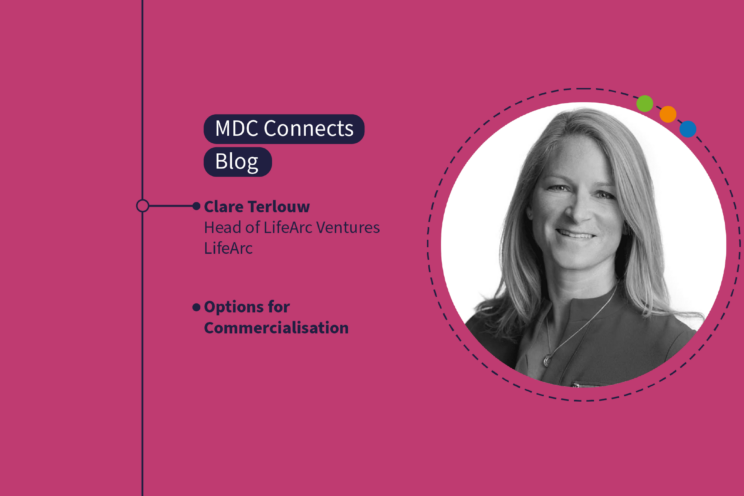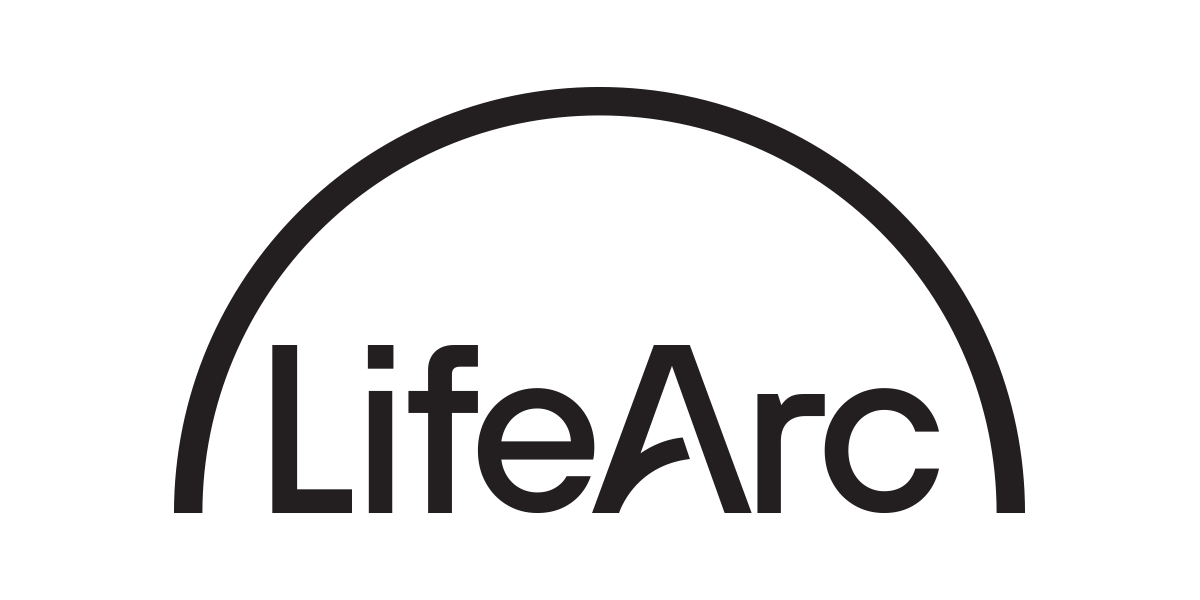Options for Commercialisation
Clare Terlouw, Head of LifeArc Ventures, LifeArc
10 July 2024


Options for Commercialisation
Clare Terlouw, Head of LifeArc Ventures, LifeArc
This blog deals with commercialising your innovation in terms of arriving at a valuation on which to base a transaction.
The Funding Cycle
Getting a health tech or biotech innovation to the point where it can be commercialised clearly requires funding, and the nature of this backing changes as development progresses.
To take biotech as an example, there is a well-established pathway for developing the asset and the parallel stages of funding:
- Establishment – often funded by friends and family, and other seed-stage funding
- Series A financing – securing institutional/venture capital to support data delivery, and the ability to attract further funding based on the resulting data package
- More substantial backing sought, to build a larger, more resourced company capable of moving through phase 2 studies
The key point here is to have a realistic understanding of the innovation’s potential value at the earliest possible stage. Having a robust indication of what level of return on investment a backer can expect is crucial to securing funds.
This means constantly monitoring the commercial landscape – to take note of any high-profile successes or failures in your therapeutic area, regulatory or legal developments and any other changes that could affect the commercialisation of your idea.
The Data is Promising, Now What?
First and foremost, you need to be clear on what you as a founder and management team want from your asset.
Do you want to build a large company that runs trials, for example, or develop the science to a certain stage and hand it on to others to take forward? Perhaps you are considering a merger & acquisition-style arrangement.
It is also important to understand early on what your shareholders will want from their input and to be ready to address any potential disconnects between all the parties involved.
Building a large pharma – key considerations:
- What skills will you need in the company?
- How much money will be needed to fund your plan?
- Who will fund the plan?
Licensing route considerations:
- Identify which companies are likely to be interested in your asset at an early stage
- Establish what potential companies really think about your data, your thesis
- Connect with these people from the outset, to gain their advice and to develop your technology to fit their needs
The mergers & acquisitions (M&A) option:
- Know the landscape of your therapeutic area – establish who has cash and a franchise that needs to be fed
- Consider running M&A and venture raise in parallel – this provides valuable optionality and learnings to inform future decisions
- Be cautious when considering using M&A advisors. Insist on seeing their deal sheet, seek independent views on how much an advisor should cost and look for references. Get board agreement on terms before hiring
Whichever option you pursue, it should be emphasised that all this can take a lot of time and effort. You need to remain a ‘going-concern’ throughout, so having enough funding in place for as long as it takes is crucial.
Decision Making – How to Get Consensus
Founders, shareholders, financiers… more often than not, different parties within a business have differing perspectives which inform their valuation positions. Achieving consensus between everyone can be both a scientific and diplomatic process.
Challenging as it may be, getting the board and key shareholders to agree on the value at which they would transact is vitally important.
Often, a strong chairperson and non-executive director can be the key to gaining this consensus. An impartial person can help bring people together, by talking to everyone to ascertain their position with an open mind.
Boards have a fiduciary duty to protect the interests of all investors – minor and principal – and to generate the best value for all. Clearly, if a business has one or two major investors holding a lot of shares, reaching a position to everyone’s satisfaction is not an easy task.
Liquidity and going-concern analysis are also important because a weak cash position equals a weak negotiation position. It may be necessary to have a bridge-financing agreement on stand-by to get a deal done, and this will necessitate a consensus ‘OK’ from investors. Talking to all parties and maintaining the dialogue can go a long way to fostering unity, particularly if it is done through an impartial player.
Preparing for a Transaction
In preparing for a transaction, it is helpful to form a transaction committee. It should comprise a limited number of people who speak on behalf of the company ‘with one voice’.
A larger group risks having one or two people ‘going off message’, which can be harmful to a transaction and your negotiating position.
Important preparation steps include:
- Valuation – benchmark transaction and trading comparables
- Set up a data room at an early stage. It should be easy to navigate and operate through graded access permissions according to levels of interest, letters-of-intent and other ‘agreements to agree’
- Arrive at board consensus on forecast R&D spend regardless of transaction type
- Appoint a small transaction committee
- Monitor expenses and set caps on legal and accounting costs. Negotiate abort fees
In Summary
Whether the intent is to grow a large company through further investment, develop the science to a particular point for others to take over (such as licensing) or aiming for an M&A deal, everything rests on the valuation.
Thorough planning from an early stage, along with communication, negotiation and adequate funding to support often protracted processes are highly important for gaining the right valuation, and to achieve successful outcomes.
Hear more in episode five of the MDC Connects 2024 webinar series, ‘Unlocking the Secrets of Medicine Commercialisation’ here.
Watch the webinar:



